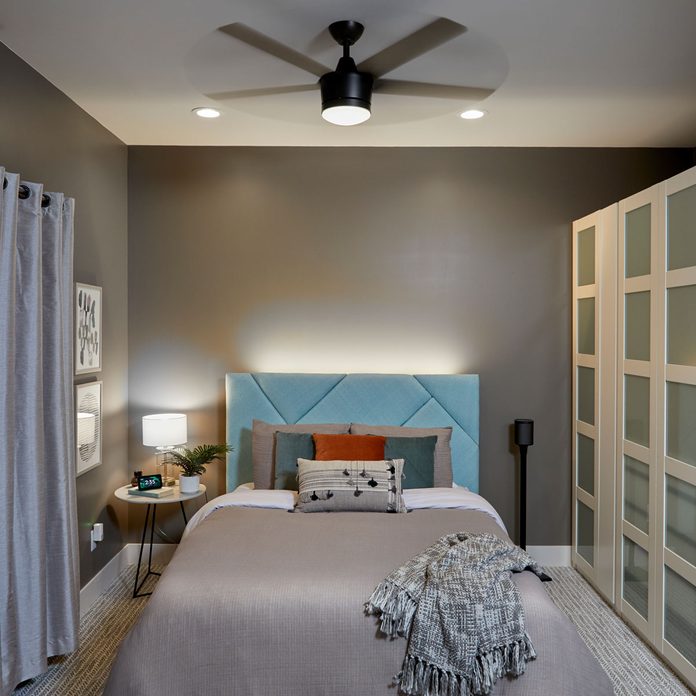
Sleep Better with These Bedroom Upgrades
A good night’s sleep can be hard to come by—especially if you have a newborn in the house like I do! If you spend too much time lying awake, it makes sense to optimize your bedroom for the best sleep possible. Here are 15 tips from a sleep expert to help you get the Z’s you need.
These are the 10 things you should never keep in your bedroom.
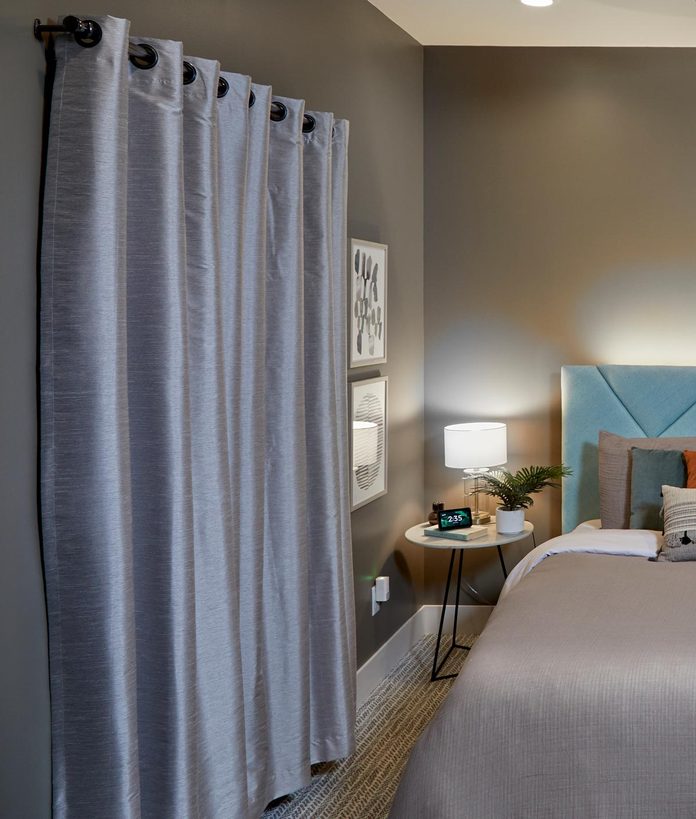
Hang Heavy Drapes to Reduce Noise
From squeaky floors to traffic outside, noise can be a pesky sleep disrupter. A quick and easy way to reduce noise is to add heavy drapes, soundproof your door and fix squeaky floors. You’ll be glad you did.
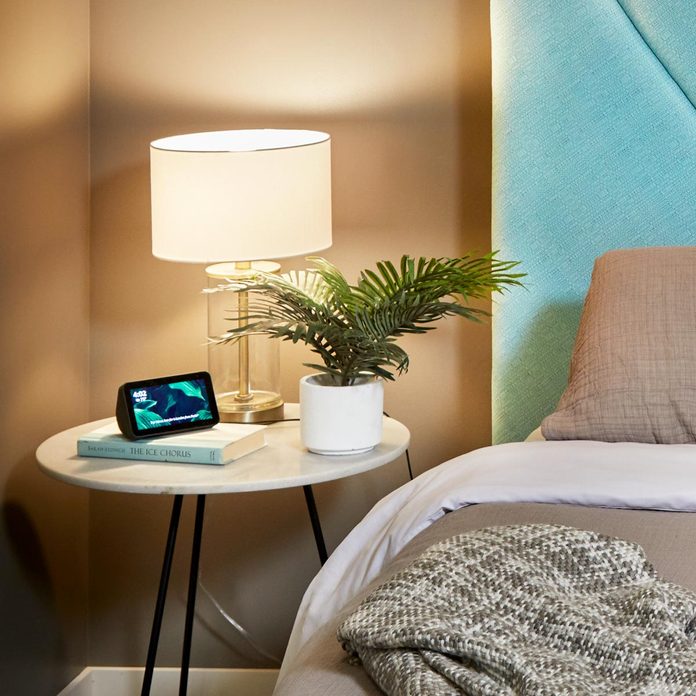
Add Plants
Plants add oxygen and improve indoor air quality. In 1989, NASA released a study concluding that indoor plants such as English ivy, peace lily and mother-in-law’s tongue, among others, reduced chemicals and pollutants. So, consider adding a few plants.
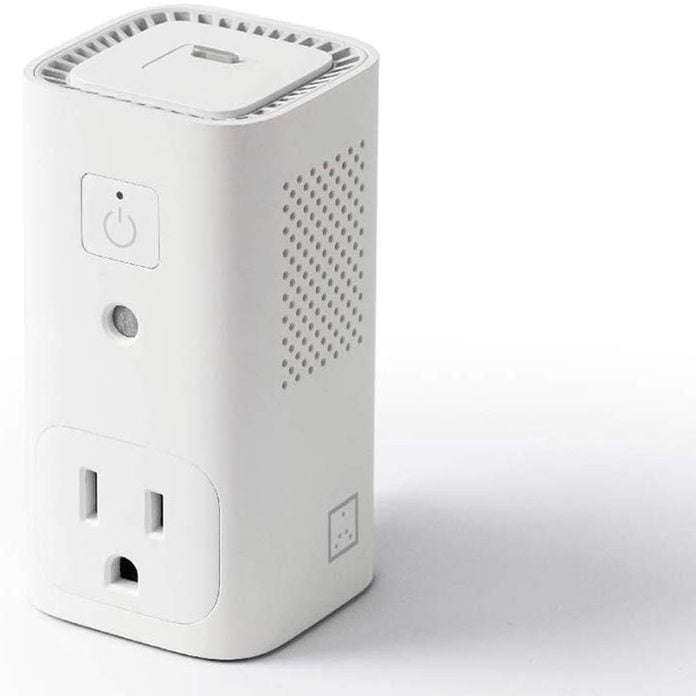
Use an Air Quality Monitor
I found the Awair Glow C smart plug ($90) super helpful. It detects temperature, humidity and VOCs. You can plug a fan, air purifier or dehumidifier into it and program it to turn on if your air quality reaches unsatisfactory levels.
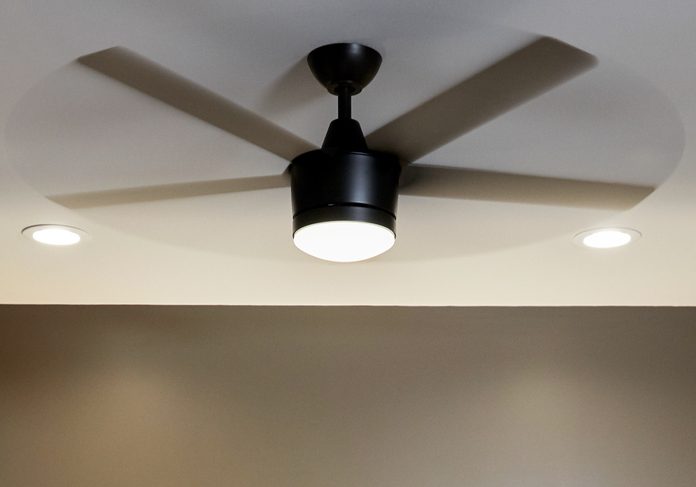
Install a Smart Ceiling Fan
Air circulation is important to maintain a comfortable, cooler room. Rather than placing a fan at the side of the room, install a smart ceiling fan. The smart functionality gives you greater control, ease of use and one less thing to worry about.
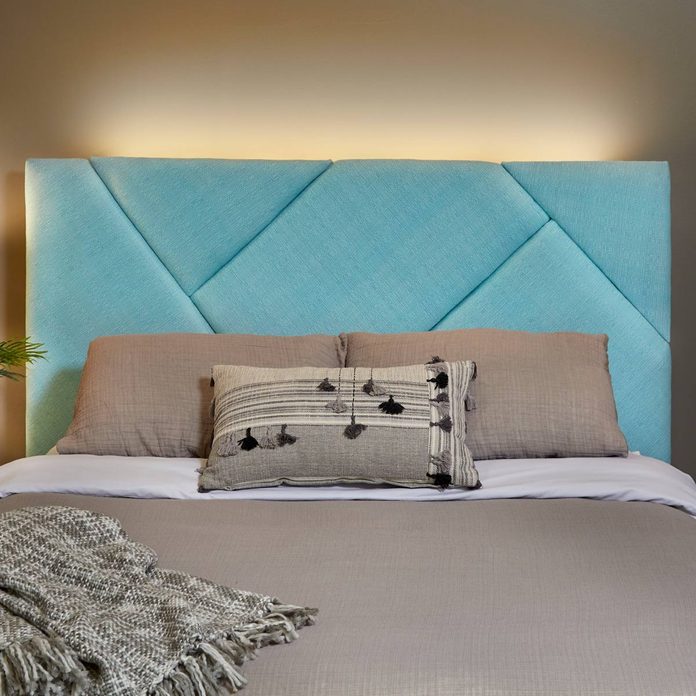
Choose Smarter Bedding
Ideally, your sheets should help you keep a low body temperature. Cotton sheets will feel cooler, but if you want to use synthetics, it’s best to have a colder room. Another option is 37.5 Technology bedding. Containing active particles from volcanic sand, its fibers detect humidity, remove moisture and manage your temperature. You can find 37.5 Technology bedding at Pottery Barn, Sleep Number and other stores for about $49 to $300.
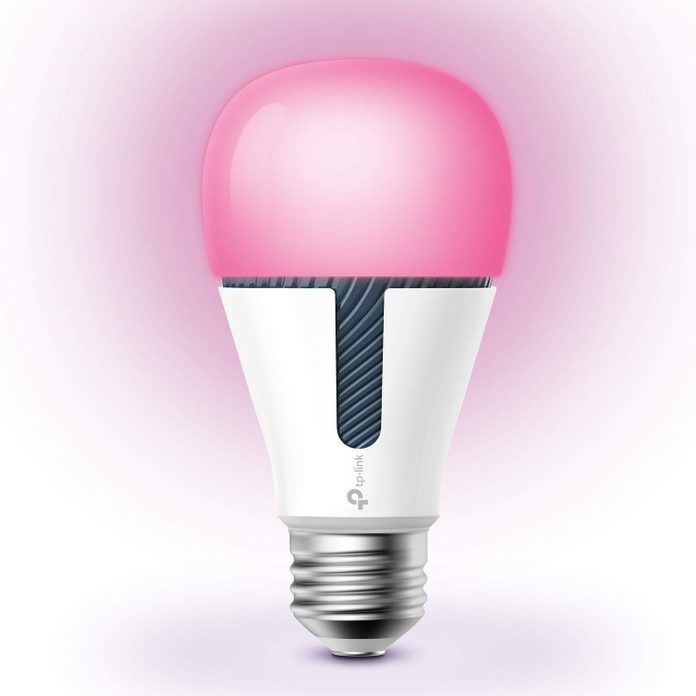
Use Warm Lights
Choose dimmable LEDs that give off warm light. To optimize your lighting even more, use smart LED strip lights or smart LED bulbs to set a relaxing scene with a variety of colors. Research has shown that long-wave light, like red, is associated with sleepiness, so set your lights to a dim red. Here’s everything you should know about smart home lighting.
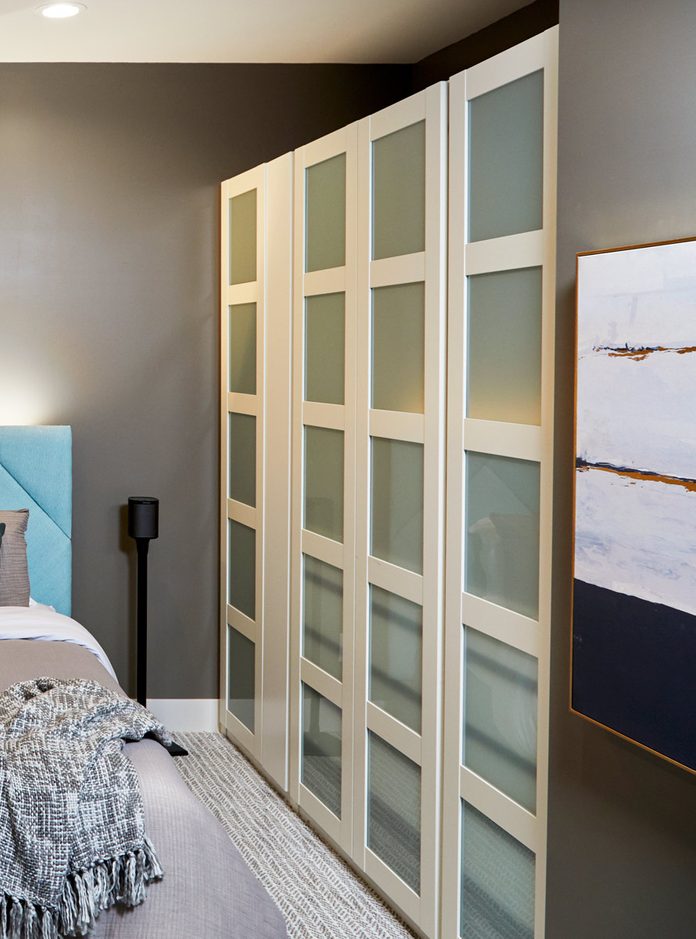
Contain Clutter
A messy room can affect your sleep. Clutter collects dust and triggers allergies, and the situation only escalates from there. Organize your room and keep it tidy. If you’re lacking an effective storage system, consider creating one to keep things shipshape.
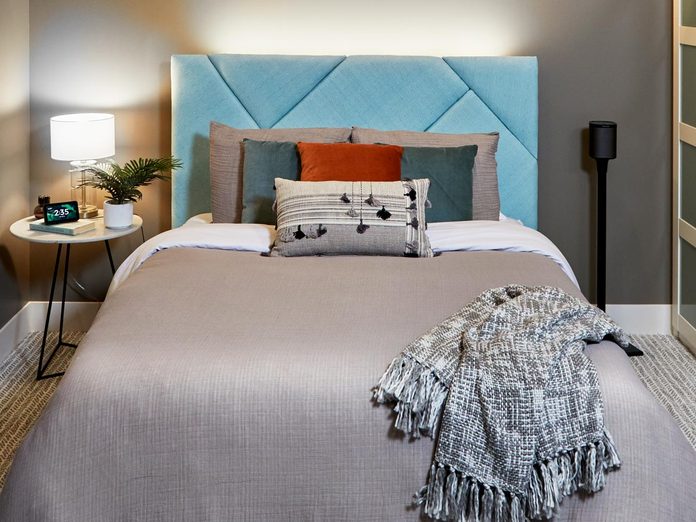
Pick the Right Mattress
Some data suggest firm mattresses are associated with improved sleep and better cardiovascular function, and high rebound mattress toppers help with core body temperature and promote deep sleep. But personal preference plays a large role in finding the right mattress. For the best sleep, choose the mattress you feel is the most comfortable. Plus, learn why you should replace your mattress sooner than every seven years.
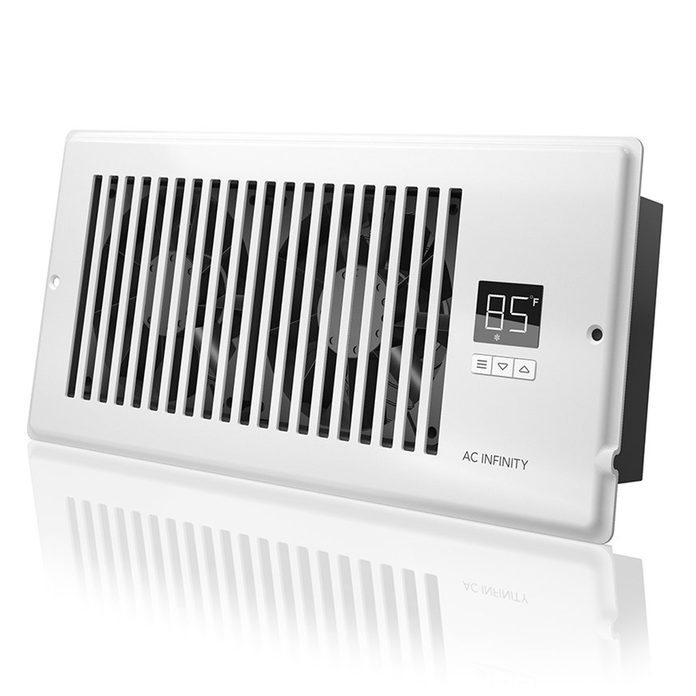
Add a Booster Fan
For high-quality sleep, maintain a low core body temperature. You want your room temperature to be about 60 to 67 degrees F. Of course, you may need to adjust according to personal preference. Keeping your body cool is the goal. One way to do this is to add booster fans to your registers.
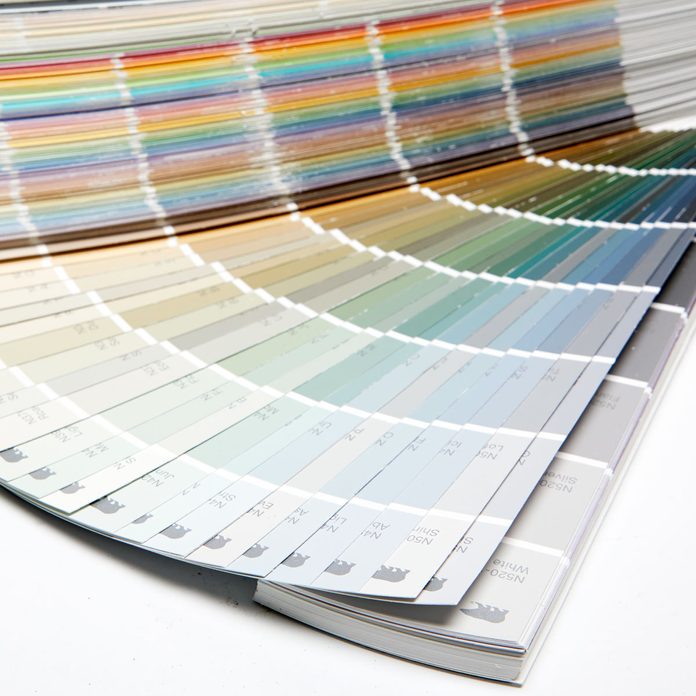
Paint the Room a Relaxing Color
The color of a bedroom does affect sleep. When choosing colors, pick a relaxing or neutral option for best results. Stay away from stimulating, gloomy and dark colors. Also, choose a low- or no-VOC paint. These are the best paint colors according to science.
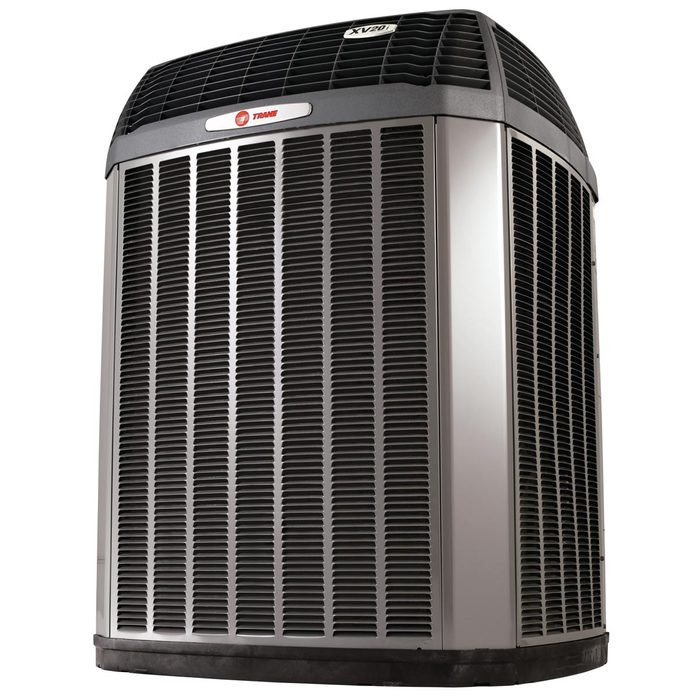
Better HVAC for Better Sleep
Air, especially your indoor climate, has a huge impact on sleep. Some people want it cool and crisp, with just the right balance of humidity, while others prefer warm and cozy temperatures, without making the room too stuffy. Controlling the air and comfort levels in your home is the job of your heating, ventilation and air conditioning (HVAC) system. And controlling the HVAC system is your job.
A smart thermostat can make your job much more convenient and precise. The Trane XL824B Connected Control, for instance, allows you to control the thermostat from the convenience of your computer or smartphone or with a popular voice assistant like Amazon Alexa or Google Home. With a builtin Nexia bridge, it works with more than 200 smart home devices, like lights, locks and your garage door. With a smart thermostat like this, you can conveniently program the temperature, as well as the whole house humidifier, dehumidifier or fresh air ventilation system, for an ideal sleep environment.
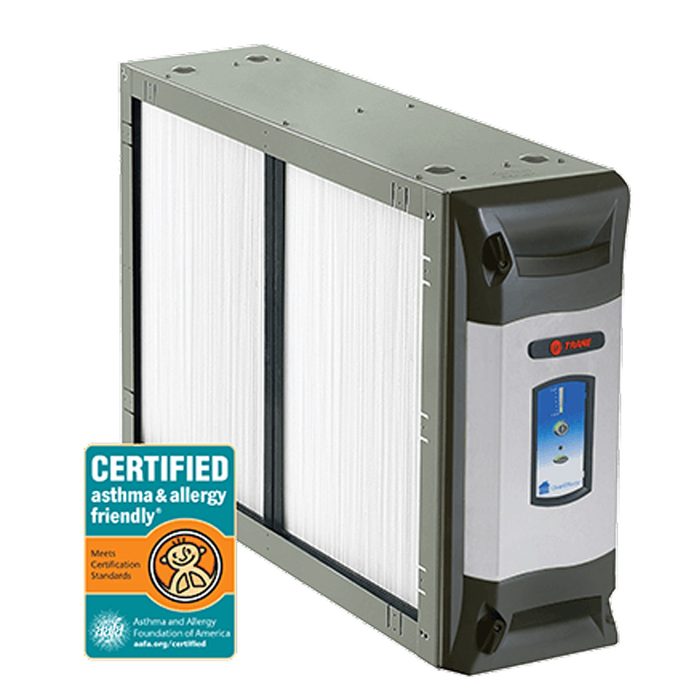
Clean Air is Better Air
Cleaner air is also beneficial when you’re trying to obtain a good night’s sleep. With a whole home air cleaner like Trane’s CleanEffects, it’s possible to remove 99.98 percent of airborne particles. It removes eight times more than the best HEPA room filter and 100 times more than the typical 1-in. HVAC filter.
If your HVAC system is older, consider the sleep benefits of replacing it. HVAC technology has improved dramatically in the last few years. Consider an upgrade like the Trane XV20i TruComfort Variable Speed; it’s one of the industry’s most trusted air conditioners for ultimate climate control and maximum efficiency. The integrated TruComfort technology automatically adjusts the temperature using its 750 levels of comfort to avoid temperature swings. Efficient newer systems like this one also cut energy bills, sometimes enough to make them a true investment with a real payback. For specific savings calculations and expert advice on a new thermostat or HVAC system, contact your local Trane HVAC contractor.
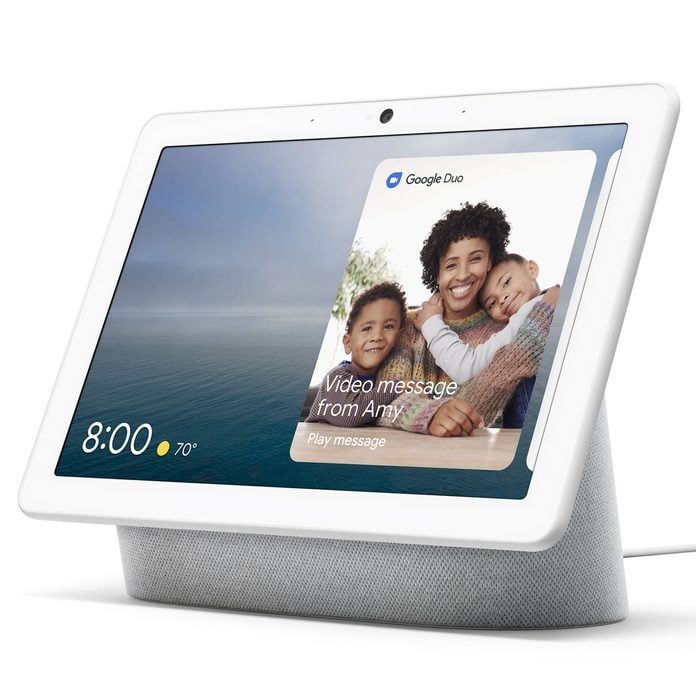
Program a Smart Bedtime Routine
With the help of Google Assistant, I programmed a “routine” so that everything would be exactly how I want it right before bed. To do this, I used my smart thermostat, smart ceiling fan and smart LED lights to sync with my Google Home Hub. Under the routine labeled “bedtime,” I programmed a list of actions: I wanted Google to tell me the next day’s weather, set the thermostat to 70 degrees, turn on the ceiling fan and dim the lights to a nice red glow. When night came, I said, “Hey Google, bedtime,” and in one fell swoop everything fell into place. The beauty is in the customization; you can design your smart room experience to be however you want it. Check out these 10 smart Google Home devices to automate your home.

Clean the Air with a Purifier
A study done at the University of Washington found that people sleeping in high pollution were 60 percent more likely to sleep poorly. A simple, effective way to clean your air is with an air purifier. When choosing one, consider the size of your room, the type of filter and the maintenance involved.
The Blue Pure 211 by Blueair changes the air in a 540-sq.-ft. area five times per hour, has a washable pre-filter and is not ionized; it uses a combination of electrostatic and mechanical filtering. Some air purifiers like this can be large and create white noise, so keep that in mind if you want compact and quiet. At the end of the day, the goal is to reduce air contaminants, and after six months, we were pleasantly surprised how well this unit reduced allergy symptoms. You can find it online for $300. Check out our guide for the best air purifiers for different rooms.